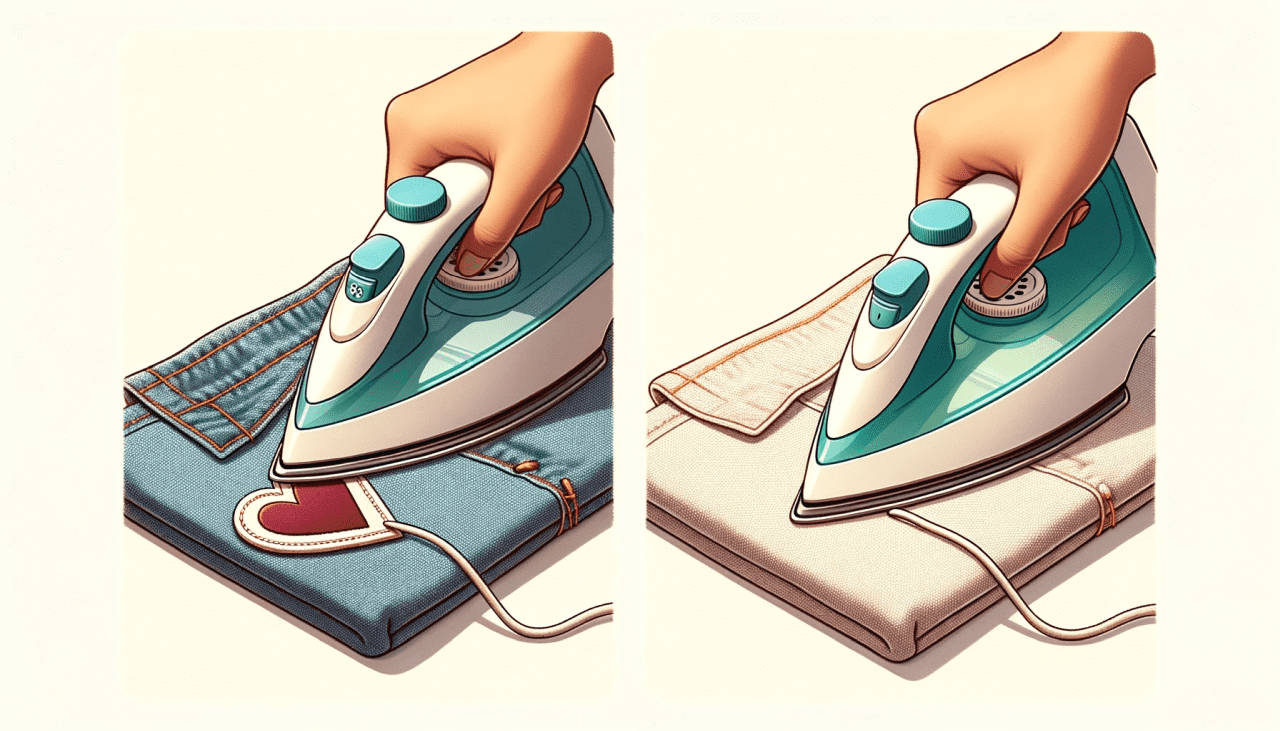Once upon a time, a young girl named Lisa received a beautiful denim jacket from her grandmother. The jacket was adorned with a variety of colorful patches, each one telling a unique story. As Lisa grew older, she began to appreciate the artistry and significance of these patches, sparking her interest in the world of sew-on and iron-on patches. Just like Lisa, many of us find ourselves intrigued by these decorative elements, often wondering about the differences between sew-on and iron-on patches.
In this comprehensive guide, we will delve into the fascinating world of patches, exploring the fundamental aspects of sew-on patches and the convenience that iron-on patches offer. We will also compare the durability of both types, helping you understand which one might be the best fit for your needs.
Moreover, we will discuss the versatility of sew-on and iron-on patches, highlighting their wide range of uses across various materials and garments. For those who are new to this craft, we will provide a step-by-step guide on how to apply these patches, ensuring a smooth and successful application process.
However, even the most experienced individuals can make mistakes when using patches. To help you avoid these common pitfalls, we will share some of the most common errors people make when using sew-on and iron-on patches.
Finally, we understand the importance of maintaining the longevity of your patches. Therefore, we will share expert tips on how to care for your patches, ensuring they remain vibrant and intact for years to come.
So, whether you’re a seasoned patch enthusiast or a curious beginner, this guide will provide you with the knowledge and skills you need to navigate the world of sew-on and iron-on patches. Let’s embark on this journey together, unraveling the beauty and versatility of patches, one stitch at a time.
1. Exploring the Basics of Sew-On Patches
When it comes to personalizing your clothing or accessories, sew-on patches are a popular choice. They offer a certain level of versatility and durability that is often unmatched by other types of patches. Unlike their counterparts, sew-on patches are attached to the fabric using a needle and thread. This method of attachment not only ensures a secure fit but also allows for a greater level of detail in the design of the patch.
One of the main advantages of sew-on patches is their longevity. Since they are sewn onto the fabric, they are less likely to peel off or fade over time. This makes them an ideal choice for items that are frequently washed or worn. However, it’s worth noting that sew-on patches do require a certain level of skill to apply correctly. It’s important to ensure that the patch is sewn on securely to prevent it from coming loose. Additionally, the thread used to sew the patch should match the color of the patch to maintain a cohesive look.
Understanding the Convenience of Iron-On Patches
Embracing the world of iron-on patches can be a game-changer for many DIY enthusiasts and fashion lovers. These patches are not only a quick and easy way to personalize your clothing, but they also offer a hassle-free solution to mend any rips or tears. Unlike sew-on patches, iron-on patches come with a pre-applied adhesive on the back that melts when heated, allowing them to stick to the fabric. This eliminates the need for any sewing skills or tools, making them a popular choice for those who prefer a more straightforward approach. However, it’s important to remember that while iron-on patches provide convenience, they may not be as durable as their sew-on counterparts. Tip: To ensure the longevity of your iron-on patches, avoid washing the garment on a high temperature and consider adding a few stitches around the edges if possible.
3. Comparing the Durability: Sew-On vs Iron-On Patches

When it comes to durability, sew-on patches typically have the upper hand. They are securely stitched onto the fabric, ensuring they stay in place even after numerous washes. This makes them an excellent choice for items that are frequently laundered or exposed to harsh conditions. However, the application process can be time-consuming and requires some skill. If not done correctly, the stitches may become loose over time, causing the patch to fall off.
On the other hand, iron-on patches are known for their convenience. They are easy to apply, requiring only an iron and a few minutes of your time. This makes them a popular choice for quick fixes or for those who lack sewing skills. However, their durability can be a concern. While they adhere well to the fabric initially, they may start to peel off after several washes, especially if the garment is not properly cared for. Despite this, they can still provide a decent lifespan if applied correctly and treated with care.
The Versatility of Use: Sew-On and Iron-On Patches
In the realm of patch application, sew-on and iron-on patches offer distinct advantages and disadvantages. Sew-on patches, as the name suggests, require a needle and thread to attach to the fabric. This method is often preferred for its durability and permanence. The sew-on technique allows for a stronger bond with the fabric, making it less likely for the patch to come off even after numerous washes. However, this method requires more effort and skill, as it involves sewing.
On the other hand, iron-on patches provide a quicker and easier alternative. These patches come with a pre-applied adhesive layer that bonds with the fabric when heat is applied, typically with an iron. This method is ideal for those who want a fast and hassle-free application. However, the bond created by iron-on patches may not be as strong as sew-on patches, and they may start to peel off after several washes. Despite this, iron-on patches are a popular choice for their convenience and ease of use.
5. Step-by-Step Guide to Applying Sew-On and Iron-On Patches
Applying patches to your garments can be a fun and creative way to personalize your wardrobe. Whether you choose sew-on or iron-on patches, the process can be simple if you follow the right steps. For sew-on patches, you’ll need a needle, thread, and the patch you want to apply. Start by positioning the patch on the garment and securing it with pins. Then, using a simple running stitch, sew around the edges of the patch, making sure to secure the thread at the beginning and end of your sewing.
On the other hand, iron-on patches require a different approach. These patches come with a pre-applied adhesive on the back that melts when heated, securing the patch to the fabric. To apply an iron-on patch, you’ll need an iron, a damp cloth, and the patch. Start by positioning the patch on the garment, then place the damp cloth over the patch. Apply the heated iron on the cloth and press down firmly for about 15 seconds. Allow the patch to cool before moving the garment. Remember, iron-on patches may not adhere well to all fabrics, so it’s always a good idea to test a small area first.
6. Common Mistakes to Avoid When Using Sew-On and Iron-On Patches
Many people make the mistake of not preparing the fabric properly before applying either sew-on or iron-on patches. It’s crucial to ensure that the fabric is clean, dry, and ironed flat. This will help the patch adhere better and last longer. Tip: Always pre-wash the garment before applying a patch. Another common mistake is not setting the iron at the correct temperature for iron-on patches. Too hot, and the adhesive might melt too much and seep out the sides. Too cool, and the patch might not stick at all.
When it comes to sew-on patches, a common error is not securing the patch properly before starting to sew. This can result in the patch moving around and ending up in the wrong position. Tip: Use pins or a few hand stitches to secure the patch in place before you start sewing. Also, many people forget to lock the stitch at the start and end, which can lead to the stitching coming undone over time.
Lastly, many people don’t consider the type of fabric they are applying the patch to. Not all fabrics are suitable for iron-on patches, especially delicate fabrics like silk or fabrics that can’t withstand high heat. Tip: Always check the care label of the garment before applying an iron-on patch. For sew-on patches, it’s important to use a needle and thread that are suitable for the fabric to avoid damaging it.
7. Expert Tips for Maintaining the Longevity of Your Patches
Ensuring the longevity of your patches, whether they are sew-on or iron-on, requires careful attention and a few expert tips. Proper care and maintenance can significantly extend the life of your patches, keeping them vibrant and intact for years to come. Here are some key points to consider:
- Washing: Always turn your garment inside out before washing. This protects the patch from the harsh action of the washing machine. Use cold water and a gentle cycle. Avoid using bleach or other harsh detergents.
- Drying: Do not tumble dry garments with patches. The heat can cause the adhesive on iron-on patches to reactivate and potentially loosen. Instead, air dry your garments.
- Ironing: Never iron directly onto a patch. The heat can cause colors to fade and the edges to curl or fray. If you need to iron the garment, turn it inside out or use a pressing cloth.
Another crucial aspect of maintaining the longevity of your patches is the initial application. For sew-on patches, ensure you are using a strong, durable thread that can withstand wear and tear. For iron-on patches, make sure to apply enough heat to activate the adhesive properly, but not so much that it damages the patch or the garment. Always follow the manufacturer’s instructions for the best results. Remember, a well-applied patch will last longer and look better, so take your time during the application process.
Frequently Asked Questions
1. Can I switch from sew-on patches to iron-on patches or vice versa?
- Yes, you can. However, it’s important to note that iron-on patches have a special adhesive on the back that allows them to be ironed onto fabric. If you want to sew an iron-on patch, you can, but you might find it a bit more difficult because of the adhesive. Similarly, you can add adhesive to a sew-on patch to make it an iron-on, but it might not be as durable as a patch made to be ironed on.
2. Can I wash garments with sew-on or iron-on patches?
- Yes, you can. However, it’s recommended to turn the garment inside out before washing and to use a gentle cycle. For iron-on patches, avoid using high heat as it can cause the adhesive to melt and the patch to come off.
3. Can I remove and reuse sew-on or iron-on patches?
- Sew-on patches can be removed by cutting the threads that attach them to the fabric. However, they might not look as neat when reattached. Iron-on patches can also be removed, but it’s a bit more difficult and they cannot be reused because the adhesive would have already been activated.
4. What types of fabric are best for sew-on and iron-on patches?
- Both types of patches work well on most fabrics. However, iron-on patches work best on fabrics that can withstand high heat like cotton and denim. They’re not recommended for delicate fabrics like silk or fabrics that can melt like nylon.
5. How long do sew-on and iron-on patches last?
- With proper care, both sew-on and iron-on patches can last a long time. Sew-on patches tend to be more durable because they’re secured with thread. Iron-on patches can also last a long time, but they might start to peel off after several washes, especially if high heat is used.

